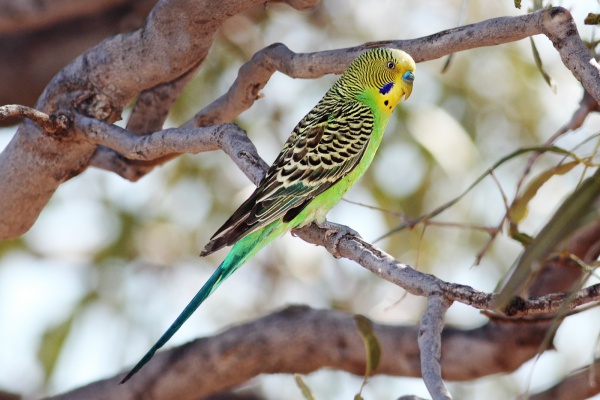Facts About Budgerigar
The budgerigar, commonly referred to as the budgie or parakeet, is a small parrot native to Australia. It is the sole species in the Melopsittacus genus. In the wild, budgies boast green and yellow plumage with black patterns, but in captivity, they have been bred to showcase a spectrum of colors. Their modest size, affordability, and talent for mimicking human speech have made them beloved pets globally. Budgies have been bred in captivity since the 19th century and are known for their nomadic nature and opportunistic breeding behaviors.
The term "budgerigar" has enigmatic origins, potentially stemming from indigenous Australian languages. Regardless of its etymology, these birds have earned a reputation as endearing pets with an impressive capacity to mimic sounds and words. Budgies are closely related to lories and fig parrots. The species was first scientifically described in 1805, and John Gould assigned them their current binomial name in 1840.
In their natural habitat, budgerigars display green and yellow feathers. However, those bred in captivity present a variety of colors. One can distinguish males from females by their ceres—the fleshy area above their beaks—with males featuring blue ceres and females displaying brown or white ones. Budgies possess tetrachromatic vision, enabling them to perceive more colors than humans, and their feathers glow under ultraviolet light, which is essential for attracting mates.
Budgerigars are nomadic and thrive in open Australian environments, subsisting primarily on grass seeds. They are opportunistic breeders, often nesting in tree hollows. Their eggs typically hatch after about 18-21 days of incubation. Breeding can be challenging, and it is crucial to avoid genetic health issues in breeding pairs.
In captivity, budgies have been bred to exhibit a wide array of color mutations and patterns. They are social creatures that require ample interaction and mental stimulation. Many budgies can learn to talk, whistle, and even play games with their human caregivers. They typically live 5-8 years in captivity, although some have reached ages of 15-20 years. Males generally excel at mimicking speech more than females.
In Australian slang, "budgie smugglers" humorously refers to tight-fitting men's swimwear, drawing a comparison to a budgerigar's physique. Budgies have also garnered fame for their mimicking abilities, with some even setting world records for their extensive vocabularies.
